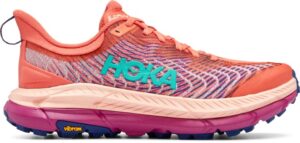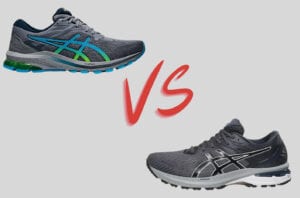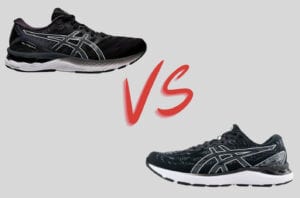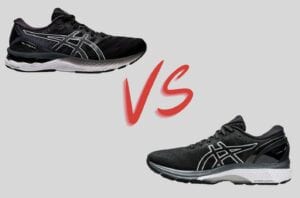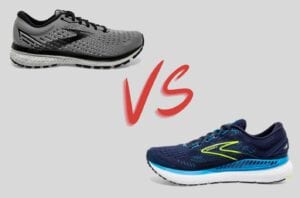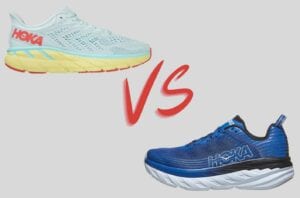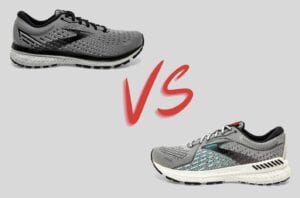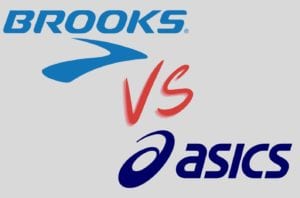The Brooks Ghost 12 is a popular running shoe that gets great reviews across the board. But how does it stand up against its successor, the Brooks Ghost 13? Here’s an in-depth look at both shoes’ features and why one may be better for you than the other.
An Overview of the Brooks Ghost
The Brooks Ghost neutral shoe was crafted with athletes’ comfort in mind. It provides an incredibly balanced, soft cushion that envelopes your foot so cozily you’ll feel like you’re running on clouds.
A combination of the BioMoGo DNA Brooks’ environmentally friendly midsole cushioning foam and DNA LOFT cushioning technology achieves this comforting effect.
When paired with the Segmented Crash Pad (the Ghost’s integrated shock absorption system), these neutral running shoes deliver a smooth and responsive ride. This is critical, as the average person’s body absorbs up to three times their body weight during a run when the foot hits the ground. Without proper support, this repetitive pressure during every gait cycle could lead to injuries such as plantar fasciitis and stress fractures.
Further, it’s hard to maintain a consistent heel-to-toe transition while running. Some people (especially beginning runners) just flail their legs around, stomping their feet on the ground with no methodical consciousness of their foot strike pattern. This can get pretty damaging after a while, which is another reason why the Brooks Ghost 12 is so advantageous to a neutral runner.
The Crash Pad encourages natural foot motion, preventing too much pressure and weight from falling on the ball of your foot.
Additionally, Brooks presented a freshly engineered mesh and 3D Fit Print upper. The uniquely engineered mesh upper provides optimal breathability while the 3D Fit print technology helps the versatile shoe retain its structure without compromising lightweight design and flexibility.
Several runners have reported that the Brooks Ghost 12 and 13 require virtually no break-in whatsoever. This is because Brooks also integrated their Flex Grooves feature, which increases the shoes’ flexibility, allowing your foot to move as freely and naturally as possible while you run.
Brooks Ghost 12 vs 13: Differences in Core Specs
Now that you know what the Brooks Ghost shoes are in and of themselves, you can better understand the differences between the Brooks Ghost 13 and the previous version. editions. First, here’s a look at the Brooks Ghost 12 daily trainer key features:
- Neutral support
- Suitable for runners with high and medium arches
- 12mm drop
- Stack height
- Heel: 31mm
- Forefoot: 19mm
- Weight
- Women’s: 9.3 oz
- Men’s: 10.4 oz
- Cushioned shoe
These elements ensure that the Brooks Ghost 12 is versatile enough to suit a wide variety of runners with various foot types yet specific enough to provide the necessary relief for those with the listed foot shapes. Plus, the shoe is just light enough to provide stability while creating a smooth ride, as mentioned above.
[RELATED: Our Complete Brooks Ghost 12 Review]
While the Ghost 13 does share a handful of similarities with the 12, there are a few distinctions to note. Here’s an overview to get a general feel for the Brooks Ghost 13 specifications:
- Neutral support
- Suitable for runners with both high and medium arches
- 12 mm drop
- Stack height
- Heel: 32mm
- Forefoot: 20mm
- Weight
- Women’s: 8.8 oz
- Men’s: 10.1 oz
- Soft Cushioning
As you can see, the two share quite a few traits, namely in their support features and profile. The most significant differences lie in the type of technology integrated into the shoes’ design and their weight (the Brooks Ghost 13 is 3-5 oz lighter, depending on whether you purchase a women’s or men’s shoe).
[RELATED: Our Complete Brooks Ghost 13 Review]
To determine whether the absence of these features will change your running experience, here’s a more detailed description of the two.
Brooks’ BioMoGo DNA and DNA LOFT
One of the biggest advantages that the Brooks Ghost 12 shoes have over the 13 is the integration of the BioMoGo DNA foam.
So, what is the BioMoGo DNA? Essentially, this is Brooks’ take on an environmentally-friendly shoe component that will not only improve your running experience but shrink your carbon footprint (pun intended).
On one level, this midsole foam will endure extensive use. Then, when you’re finally ready to toss the Brooks shoes out to the landfill, the material contains a non-toxic natural additive that stimulates anaerobic microbes in the shoes’ proximity to breaking down the material.
This causes this everyday trainer to decompose 50x faster than it usually would, which is a massive plus since shoes typically require 30-40 years to break down entirely.
(Note: The “DNA” portion of this cushioning refers to the inset that sits within the BioMoGo foam.)
Despite this difference, both shoes have Brooks DNA LOFT, a blend of EVA (ethylene vinyl acetate), a surprisingly sustainable material, rubber, and air. This technology is a step up from the Super DNA and is responsible for the softness you feel while wearing these shoes.
Brooks Ghost 12 vs 13 Uppers
Both the Brooks Ghost 12 and 13 running shoes have the 3D Fit Print. This is Brooks’ innovative screen-print technology that helps retain the shoe’s physical structure throughout repeated use. It also maximizes flexibility.
Without this, your shoes may be at risk of warping, deforming, and losing their structural integrity over several hundred miles. (If you’re wondering how many miles Brooks Ghost last, the company estimates that all its footwear lasts 300-500 miles.) This feature coincides with the Air Mesh uppers another aspect where the two shoes differ.
What is Air Mesh? Brooks waited until the Ghost 13 to introduce this new tech to its upper mesh, which is specially engineered to maximize breathability to eliminate hot spots without compromising a snug fit.
Although the Ghost 12 shoes have a breathable mesh too, it’s not specifically designed for optimal ventilation so that runners might feel the difference after a few miles.
Weight Differences Between the Brooks Ghost 12 and 13
Another critical feature that separates these two comfortable shoes is their weight. As mentioned above, this difference can take about 3-5 oz off your shoe, depending on whether you wear men’s or women’s sizes.
This doesn’t seem like much, but this can cause a drastic difference in your performance. Heavier shoes force you to exert more energy as you run, so you’re likely to get tired much more quickly heck, you might not even finish your run!
Alright, so this weight difference might not be that big of a deal for experienced runners. The researchers at the University of Colorado Boulder discovered that for every 3.5 oz (or 100 g) of weight added, the athletes only ran 1% slower. However, they did speculate that an “elite marathon” runner might be able to shave off 57 seconds of their time by reducing their shoe weight by 100g.
Still, beginners beware: Try on the shoes first and perhaps even compare their weights to your current pair. It’s best to go with a lighter shoe when you’re starting out you don’t want to get off on the wrong foot (yes, pun intended again) at the very beginning of your running experience.
Brooks Ghost 12 vs 13: Comparison of Similarities
Some of the shoes’ similarities have been pointed out already. There are a few to note in addition to the full-length DNA LOFT and 3D Fit Print, including the drop and compatibility with certain foot types.
Brooks Ghost 12 vs 13: Drop
The general rule for a shoe’s drop is that the higher the measurement, the steeper the angle difference between the heel and forefoot. For example, imagine that your foot is flat on the ground and barefoot. In this position and condition, your foot has a 0 mm drop.
Now, when you wear a shoe, your heel is lifted off the ground, elevating it above your forefoot. This changes your foot’s movement pattern while you run, either for worse or better (depending on your foot).
While some runners recommend only getting shoes with a 6 mm drop or greater (especially if you run heel to toe), other experts say that six or fewer is ideal and even go so far as to say that 0 is best. This makes sense if you naturally land on your forefoot or midfoot while running.
Both the Brooks Ghost 12 and 13 shoes have a massive drop at 12 mm. Many runners have reported that the drop has been a huge relief from their typical low-drop alternatives. Both shoes are great in providing much-needed relief to the calves of runners who tend to be heel-strikers.
Keep in mind that the internal heel counter is less padded in the 13 compared to the 12, which may be a significant drawback for this same group.
What Foot Shapes Are the Brooks Ghost 12 and 13 Best For?
- Neutral arch
- Low arch (having a low arch or none at all is typically referred to as having “flat feet”)
- High arch
All these different foot shapes determine how your foot rolls around while you walk. Someone with a neutral arch won’t have as many problems as a person with flat feet since their foot will roll to a good position as they walk.
However, a person with a low arch might experience discomfort or pain over time, as their feet roll too far inward called “overpronation” during movement. On the other hand, someone with a high arch will notice that their feet slightly roll inward on an impact, known as “under pronation” (e.g., striking the foot down while running).
If you don’t already know, you can tell which of these descriptions matches your foot shape by looking inside your shoe. If the sole is compressed evenly, you have a neutral arch. However, those with excessive wear on the inner portions of the sole overpronate. You might under pronate if the wear is on the sole’s outer edge.
Those who would benefit the most from wearing the Brooks Ghost 12 and 13 shoes have neutral or high arches.
Brooks Ghost 12 vs 13: Which Brooks Ghost is the Best?
Honestly, both of these shoes are excellent for a wide variety of runners. Whether you have neutral or high arches or go on short or long-distance runs, you’ll feel great in this footwear.
Still, there are some areas where the 12 outperforms the 13. Specifically, the BioMoGo DNA’s inclusion is a huge plus, as it makes the ride so much smoother while also supporting the environment.
On the other hand, the Ghost 13 is much lighter than the 12. Plus, its internal heel counter is less padded than the 12.
This means that you’re essentially looking at a trade-off between comfort and a slight hindrance in speed and athletic longevity if you’re opting for the 13 over the 12.
Either way, both shoes are great buys for any runner (except those with flat feet), so you’ll get your money’s worth, depending on your specific needs.

